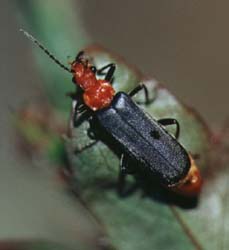
A predaceous soldier beetle looking for aphids to eat. There are several species in this group of beneficial beetles. If you have aphids, count on this beetle as your friend in the garden as it will devour huge numbers of aphids.

A predaceous soldier beetle looking for aphids to eat. There are several species in this group of beneficial beetles. If you have aphids, count on this beetle as your friend in the garden as it will devour huge numbers of aphids.
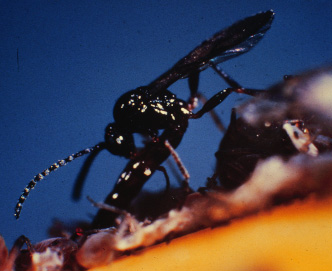
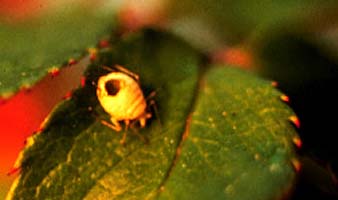
Aphid mummy -- this is a dead aphid that was parasitized by an aphid wasp. Note emergence hole on the dorsum of the aphid. (Picture courtesy of Bob Alde).
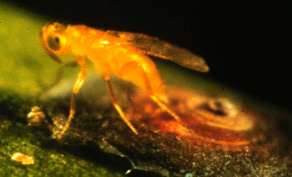
Red Scale Wasp -- Tiny parasitic wasp ovipositing into a red scale insect
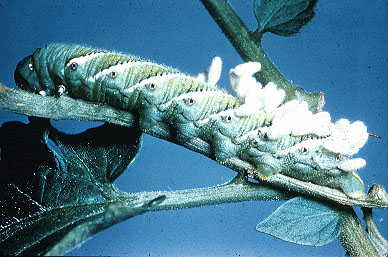
A hornworm parasitized by braconid wasps
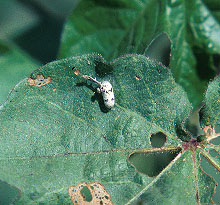
The cocoon of a parasitic wasp on top of a leaf. This is all that is left after the wasp larva feeds on the insides of the caterpillar. A small parasitic wasp will emerge from this cocoon to repeat the cycle.
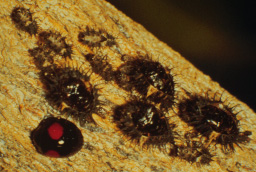
The twice stabbed lady beetle and larvae feeding on scales.
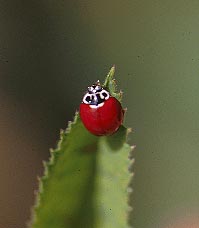
One of many native ladybeetles that are present in our gardens
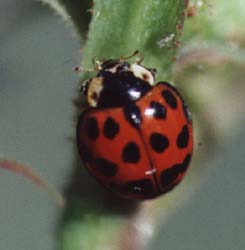
The Asian Multicolored Lady Beetle. One of the most abundant ladybeetles in the home garden.
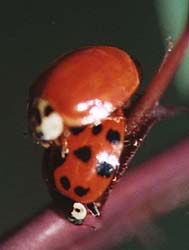
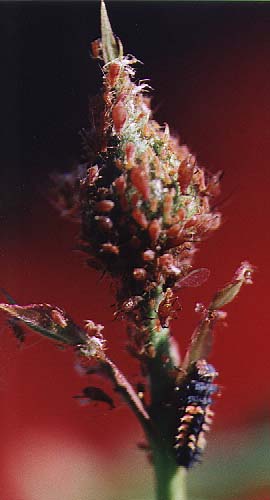
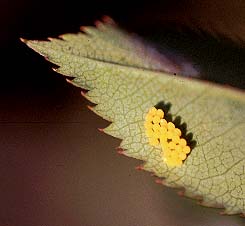
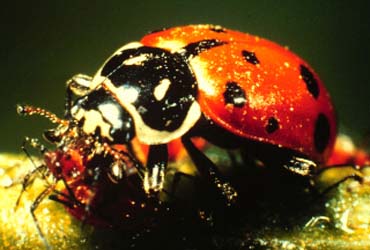
The convertgent lady beetle is also very common especially in early spring when the aphids are abundant.
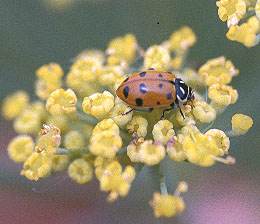
Adults are found in many of the flowering plants.
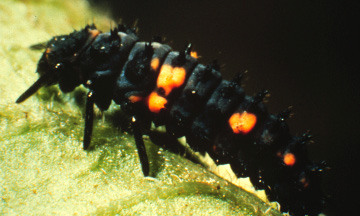
The larvae are very common around aphid infestations.
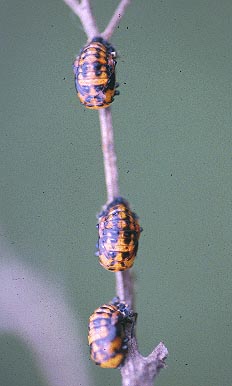
The ladybeetle pupae are often mistaken for beetle pests.
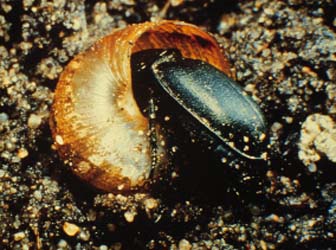

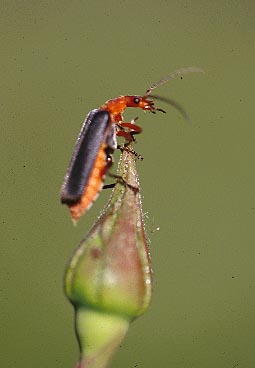
A predaceous soldier beetle looking for aphids to eat
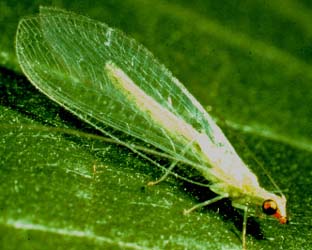
Green lacewing adult
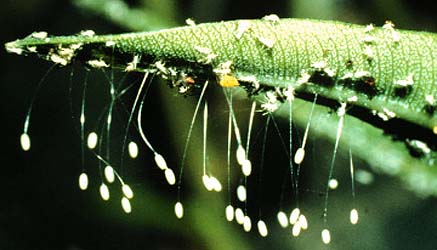
Green lacewing eggs
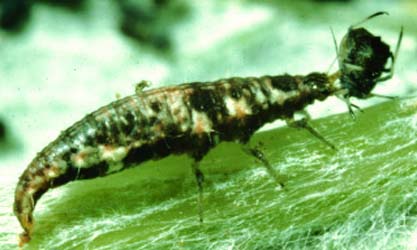
Green lacewing larva eating an aphid
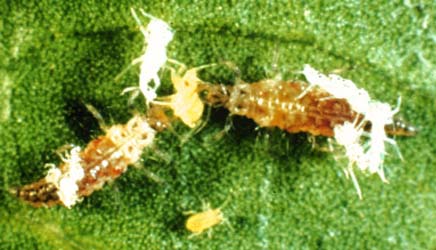
Green lacewing larvae
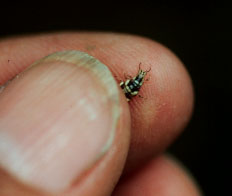
Green lacewing larva showing sickel-like mandibles
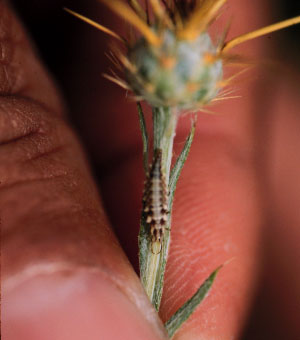
Green lacewing larva on a stem of yellow starthistle
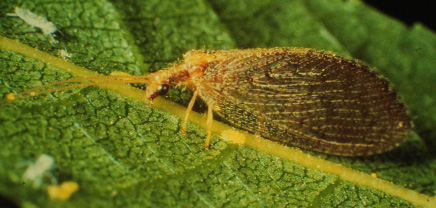
Brown lacewing adult
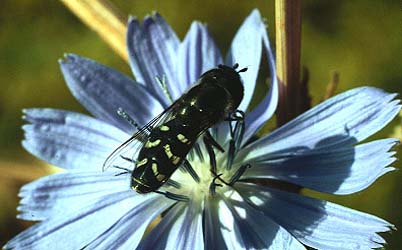
Flower fly adult nectaring on a flower
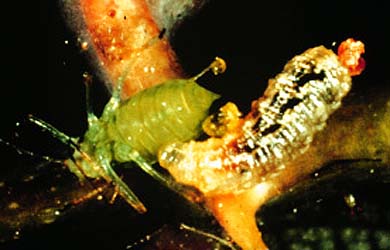
Flower fly larva feeding on an aphid
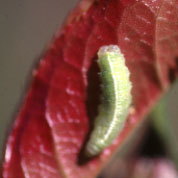
Flower fly larva on a rose leaf with bright yellow band on back
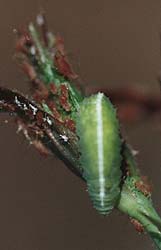
Flower fly larva on a rose leaf with bright yellow band on back
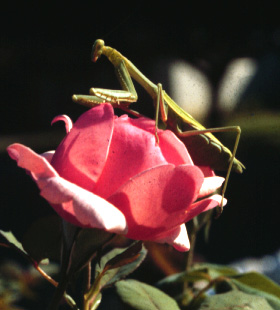
Praying mantid on a rose bloom waiting for prey to visit the rose for nectar or pollen
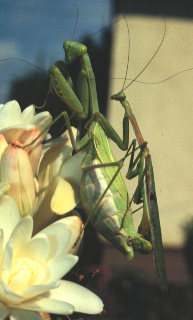
Praying mantids mating
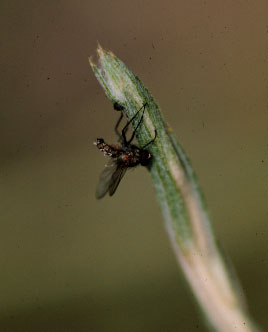
Fly infected with beneficial fungus
![]()
If you have any questions or constructive comments, I would love to hear from you, please send e-mail to Baldo Villegas